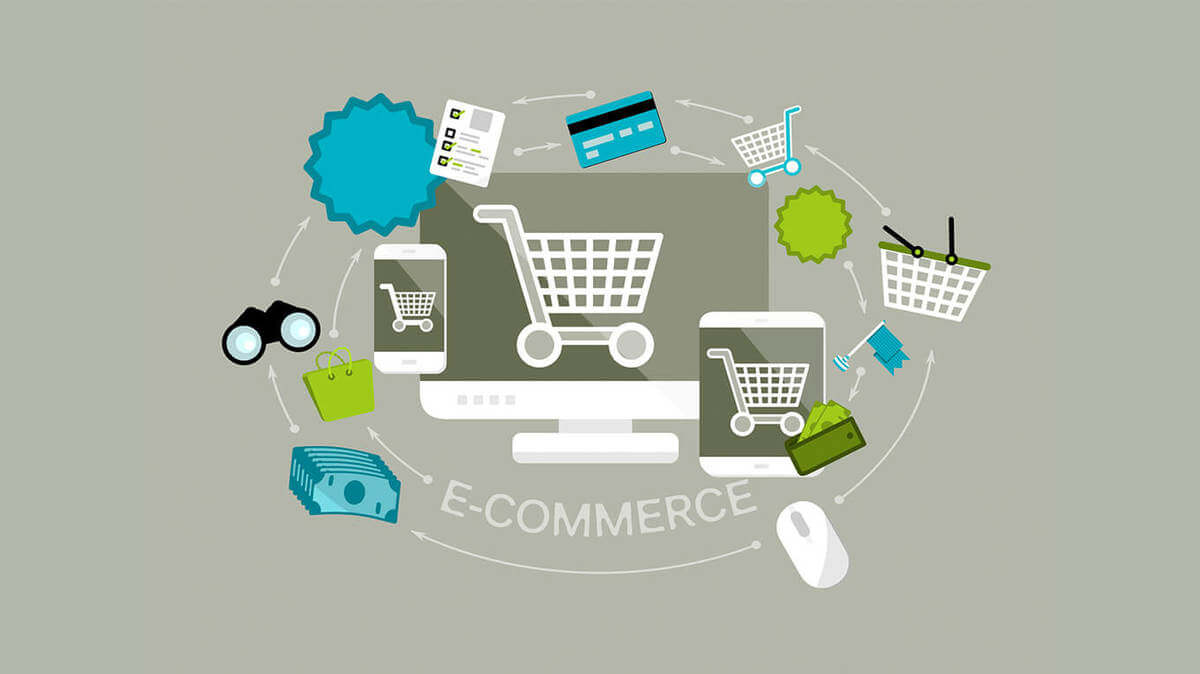
Did you know that multichannel retailing brings billions of dollars to sellers every day? Retailing has been steadily developing for many years but the real revolution happened with the advent of the internet. Online stores allowed for customers to shop from anywhere in the world without leaving the comfort of their own home. And marketplaces changed the industry all over again.
Did you know that multichannel retailing brings billions of dollars to sellers every day?
Retailing has been steadily developing for many years but the real revolution happened with the advent of the internet. Online stores allowed for customers to shop from anywhere in the world without leaving the comfort of their own home. And marketplaces changed the industry all over again.
According to research published in 2018 by Adeptmind, when American online shoppers start product search, half of them go to Amazon, the most popular marketplace with almost 200 million monthly users.
In view of this, if you own an eCommerce business, marketplaces are a worthy resource to add to your sales channels. They benefit both sellers and customers, all the while providing unique opportunities for business expansion.
So, what are the benefits of multichannel selling, why you should consider it, and how to streamline the processes of such eCommerce business? We’ve covered all these and many other questions in the article. Read on to uncover the details.
What is Multichannel Selling?

Multichannel selling is the practice of selling merchandise on multiple platforms. This eCommerce approach allows to reach a wider audience and sell products where online shoppers prefer to make purchases.
If you are an eCommerce business owner, then you should consider multichannel retailing as a way of bringing your operations to the next level. Multichannel retail is beneficial for both successful businesses and for those who are just starting their journey in eCommerce.
In general, multichannel selling results in the overall increase of the products sold and earned revenue. The benefits of such an eCommerce business model are numerous for customers and sellers.
Multichannel Commerce: The Main Benefits and Downsides
When it comes to choosing a business model, there is no single bullet for all. Multichannel commerce is no exception, as it has pros and cons. It should be perceived from all angles so that sellers could get a better sense of it.
Benefits of eCommerce Multi Сhannel Retailing

If you are wondering what are the benefits of multiple marketing channels, below you will find the answer. The advantages of implementing a multichannel selling strategy are too attractive to be ignored:
- Broadened customer base
The ability to reach a wider audience is one of the reasons which make eCommerce businesses turn to multichannel retail. As you add new sales channels, you increase the chances that more customers will see your products. And with popular marketplaces like Amazon, you instantly get access to millions of online shoppers who are ready to buy.
- Increased revenue
A multichannel retailer sells merchandise to a greater number of shoppers. Even more, 15-30% of multichannel customers spend more than customers who are only shopping on a single sales channel. The lifetime value of such shoppers is also higher.
As sellers get almost unlimited opportunities to market products, they sell more and get more.
All of this directly influences the seller’s revenue.
- Improved brand recognition
Take a look at the most popular brands – they are all omnipresent. You can buy their products on multiple marketplaces and selling channels. It is a wise thing to adopt tried and tested practices. Create your listings on such marketplaces like eBay, Amazon, Walmart, etc. The more customers see your brand, the more they trust your brand, and are more likely to buy from you and not your competitors.
- Strong competitiveness
Are your competitors selling products on Amazon or eBay? Or maybe they are present on all these marketplaces? You should also utilize these channels, and also those that your competitors don’t use. Marketplaces can become a competitive advantage and the main weapon against competitors.
- Low risks of testing ideas
Marketplaces are time and cost-efficient way of testing new markets. The risks are minimal as you don’t need to invest a lot upfront to promote your brand on the market.
Let’s say you want to sell products in Latin America. You can use Mercado Libre, the most popular eCommerce marketplace in the region, and list your products there. The best strategy is placing the most popular products. If online shoppers from Latin America show interest in what you offer, then the market is worth exploring.
By placing a few products in a new marketplace, it is possible to test how your products would sell in a new country with little to no upfront investments.
Challenges of multichannel retailing

As with any other strategy, multichannel selling has a few challenges that might stop merchants from exploring it and you need to be prepared to face them.
- Exporting and importing products
The first step of selling on a new marketplace is the creation of product catalogs. These usually contain such information as product names and detailed descriptions with specifications. The task is to transfer product listings from your website to the marketplace of your choice. It may eat up a lot of time adding all products manually. It is the main downside of multichannel selling.
- Inventory and order management
When you start selling on multiple marketplaces, you need to synchronize all data across these sales channels. The last thing eCommerce owner wants, is to oversell and make customers angry. When orders come from various sources, it is quite a challenge to track inventory.
Order and inventory management is probably the most difficult things multichannel selling.
- Analytics
Data rules the world of commerce and eCommerce in particular. It provides an insight into the efficiency of every sales channel and helps to understand which strategies work and which need to be improved. Most marketplaces provide business owners with built-in analytics tools with no way to compare data from multiple sources. It significantly increases the time needed to analyze thus delaying from swiftly making data-driven decisions.
How to Become a Successful Multichannel Seller?

It is not difficult to start multichannel selling. At the same time, it is quite challenging to become a successful multichannel seller. There are a few ground rules that can increase chances significantly
- Pick the right sales channels
While it might seem like a great idea to explore all existing marketplace, in reality, it is not an efficient strategy. You don’t want to spread your efforts thin; you need to make thought-through and rational decisions.
You don’t need to sell everywhere; you need to focus on the sales channels where your customers are. It is up to you to understand their needs and preferences.
- Enhance Your Online Presence
To further streamline your multichannel selling strategy, consider utilizing expert resources for your online presence. For instance, Freshy offers WordPress expertise that can enhance your eCommerce website’s functionality and design. Leveraging such professional services can ensure that your site is user-friendly, fast, and optimized for conversions, which is crucial for maintaining a strong online presence across all sales channels.
- Customer experience is your priority
No matter what you do, always put your customers first. Online shoppers are presented with a huge number of choices. It is not about the lowest prices anymore; it is about being proactive and useful.
Customer experience is vital for any brand. Shoppers want sellers to anticipate their needs. They expect you to provide the right experience and technology. All put together, it is always wise to provide exceptional services, customer support, and customer experience. Learn what your customers expect from you and give them just that.
- Stay consistent
Being consistent regarding your pricing, brand positioning, and overall customer experience across multiple sales channels is important. When you are on different marketplaces, you cannot control all aspects of the customer journey. Still, you can devise a unified standard for managing orders and customer service, and try to implement it on all marketplaces.
- Be prepared to scale
This step is essential for sellers of all types – from a manufacturer of their own products to resellers. As you grow business and embrace new sales channels, sales go up as does the need for order fulfillment, customer service, and inventory management. You should be ready to scale both in terms of human resources and technology.
- Choose the right tools
Selling across multiple channels is challenging but with the help of powerful tools, you can reach success much faster. Sellbery is a perfect fit to automate some important business processes. This multi channel eCommerce software provides various features:
- multichannel order management system
- multichannel inventory management
- multichannel product listing
- Forever Free 99 SKU Plan — the best offer on the market.
- Pain-free integrations with the largest marketplaces to sell your products in 50+ countries.
- Free & Easy connection to Google Merchant for an unlimited product upload to start Google Smart Shopping Campaigns.
It Is Time to Try Multi Сhannel Selling
As you can clearly see, multichannel retailing is a challenging but rewarding task. With the advent of the internet and the launch of various marketplaces, it has become especially easy to become a multichannel seller. With the right strategy and tools, sellers can broaden the customer base, get more orders, and increase revenue.
Was this news helpful?







 Yes, great stuff!
Yes, great stuff! I’m not sure
I’m not sure No, doesn’t relate
No, doesn’t relate



